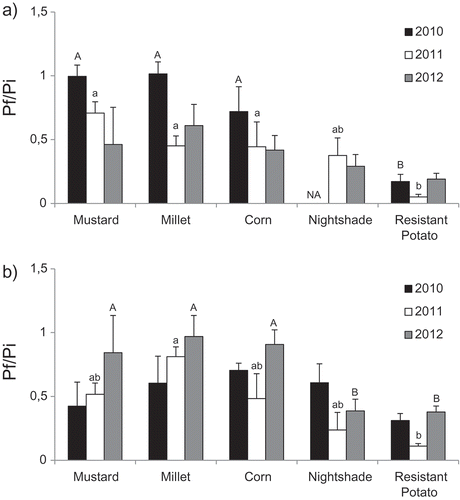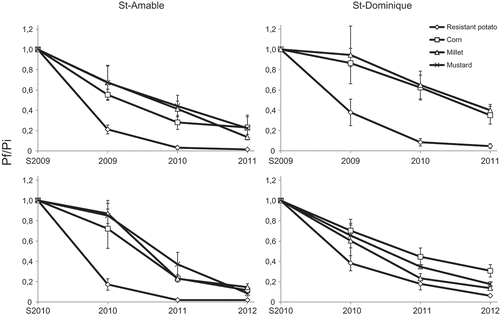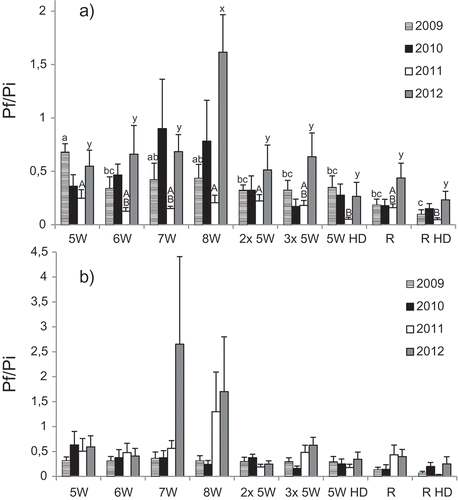Figures & data
Table 1. Average number of initial viable eggs per gram of soil (range) in sandy soil (St-Amable) and muck soil (St-Dominique).
Fig. 1 Effect of 1-year cropping with different plants on population densities of Globodera rostochiensis expressed as Pf/Pi, where Pf is the final population and Pi is the initial population, with both populations expressed as the number of viable eggs per gram of soil. Results are shown for (a) St-Amable (loamy sand) and (b) St-Dominique (muck soil). Treatments with different letters in a single year were significantly different (Duncan; P ≤ 0.05).

Fig. 2 Effect of 3 years of cropping with different plants on population densities of Globodera rostochiensis expressed as Pf/Pi, where Pf is the final population and Pi is the initial population (Spring of first year), with both populations expressed as the number of viable eggs per gram of soil. Results are shown for St-Amable (loamy sand) and St-Dominique (muck soil) for two periods of 3 years (2009–2011 and 2010–2012). Data for ‘Mustard’ from 2009–2011 in St-Dominique are not available.

Fig. 3 Effect of trap cropping on population densities of Globodera rostochiensis expressed as Pf/Pi, where Pf is the final population and Pi is the initial population, with both populations expressed as the number of viable eggs per gram of soil. Results are shown for (a) St-Amable (loamy sand) and (b) St-Dominique (muck soil). 5 W, 6 W, 7 W and 8 W = susceptible potato pulled out after 5, 6, 7 and 8 weeks, respectively, and followed by rye for the remainder of the season; 2× 5 W and 3× 5 W = 2 and 3 successive plantings of susceptible potato pulled out after 5 weeks, respectively; 5 W HD = susceptible potato planted at high density (50 plants per microplot) and pulled out after 5 weeks; R = resistant potato; R HD = resistant potato planted at high density (50 plants per microplot). Treatments with different letters in a single year were significantly different (Duncan; P ≤ 0.05).

Fig. 4 Effect of soil amendments on population densities of Globodera rostochiensis in St-Amable (loamy sand) expressed as Pf/Pi, where Pf is the final population and Pi is the initial population, with both populations expressed as the number of viable eggs per gram of soil. Treatments with different letters in a single year were significantly different (Duncan; P ≤ 0.05).

